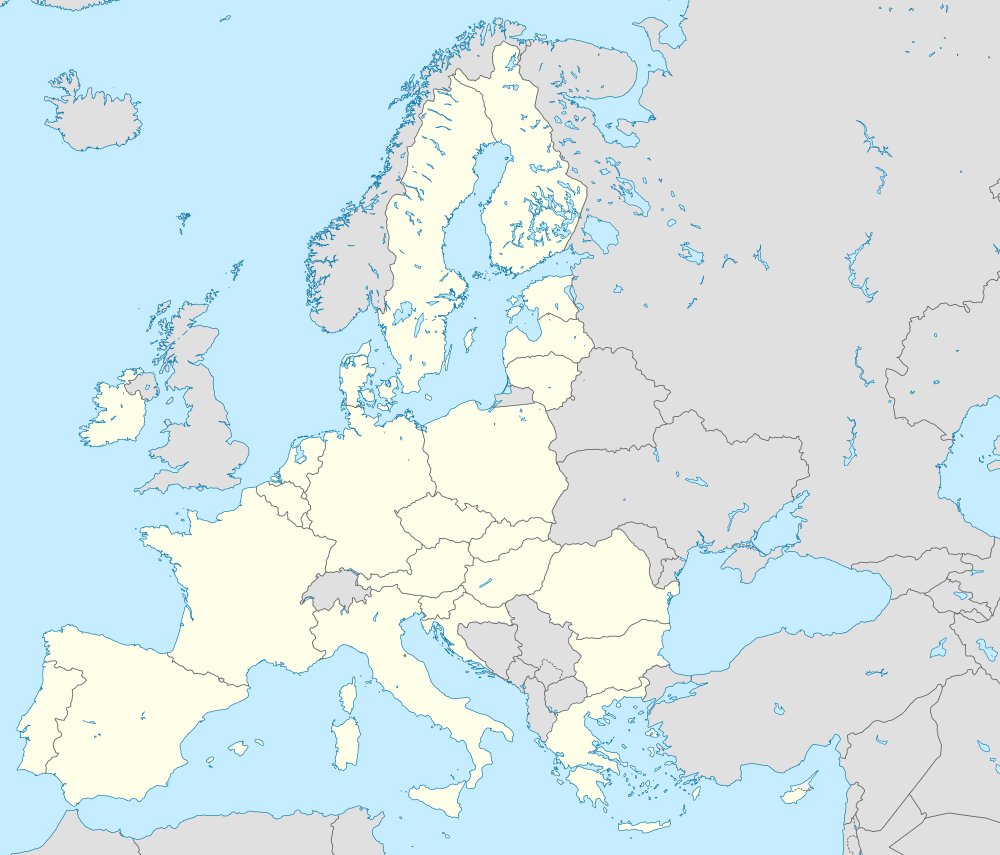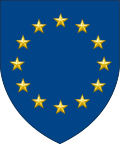European Union Institute for Security Studies
The European Union Institute for Security Studies (EUISS) is a Paris-based agency of the European Union (EU) within the realm of Common Foreign and Security Policy (CFSP). The EUISS is an autonomous agency with full intellectual freedom and researches security issues of relevance for the EU and provides a forum for debate. In its capacity as an EU agency, it also offers analyses and forecasting to the High Representative for Foreign Affairs and Security Policy, Josep Borrell.
 | |
| Agency overview | |
|---|---|
| Formed | 13 November 1989[1] (as the Western European Union Institute for Security Studies) 20 July 2001 (as an EU agency) |
| Jurisdiction | European Union |
| Headquarters | Paris, France |
| Agency executive |
|
| Key document | |
| Website | iss.europa.eu |
| Map | |
 Paris European Union Institute for Security Studies (European Union) | |
History
The EUISS evolved from Western European Union Institute for Security Studies following a gradual transfer of powers from the Western European Union (WEU) to the EU.
Activities
Mission
According to the Council Joint Action of 20 July 2001, which established the EUISS, the mission of the EUISS is to 'contribute to the development of the CFSP, in particular the CSDP, in coherence with the European Security Strategy. To that end, it shall conduct academic research and policy analysis, organise seminars and carry out information and communication activities in that field. The institute's work shall inter alia contribute to the transatlantic dialogue. It shall involve a network of exchanges with other research institutes and think-tanks both inside and outside the European Union'.[2]
Oversight and Funding
According to the European External Action Service (EEAS) website the institute is funded by member states of the European Union, according to a GNP-based cost-sharing formula, and governed by:
- the Political and Security Committee (PSC) – which exercises political supervision
- the Board – laying down budgetary and administrative rules and approving the institute's work programme (chaired by the HR/VP Federica Mogherini)[3]
Research
The EUISS researches topics related to the Common Foreign and Security Policy (CFSP), including the Common Security and Defence Policy (CSDP). The Institute therefore covers EU relations with the following regions:[4]
- Africa
- Asia
- Middle East
- Russia and eastern neighbours
- Transatlantic relations and Latin America
- Western Balkans
In addition to these geographical regions, the EUISS addresses the thematic areas of counter-terrorism, migration, non-proliferation, conflict prevention, crisis management, global governance, EU enlargement, cybersecurity, justice and home affairs, and defence industries.[5]
Outreach
Communications and outreach activities are central to the work of the EUISS in fulfilling its mission to contribute to Europe's strategic debate. The EUISS maintains a strong online presence (website re-launched in 2017) and distributes its research via a regular newsletter.[6] Making use of social media tools, the EUISS maintains active Facebook[7] and Twitter[8] accounts, as well as Flickr[9] and LinkedIn[10] channels.
The EU command and control (C2) structure, as directed by political bodies which are composed of member states's representatives and generally require unanimous decisions, as of April 2019:[11]
- Liaison: Advice and recommendations Support and monitoring Preparatory work
| Political strategic level: | |||||||||||||||||||||||||||||||||
| ISS | EUCO Pres. (EUCO) | Chain of command | |||||||||||||||||||||||||||||||
| Coordination/support | |||||||||||||||||||||||||||||||||
| SatCen | CIVCOM | HR/VP (FAC) | |||||||||||||||||||||||||||||||
| INTCEN | HR/VP (PMG) | HR/VP (PSC) (******) | CEUMC (EUMC) | ||||||||||||||||||||||||||||||
| CMPD | DGEUMS (***) (EUMS) | ||||||||||||||||||||||||||||||||
| Military/civilian strategic level: | |||||||||||||||||||||||||||||||||
Dir MPCC (***) (MPCC) | JSCC | Civ OpCdr CPCC(*) | |||||||||||||||||||||||||||||||
| Operational level: | |||||||||||||||||||||||||||||||||
| MFCdr (****) (MFHQ) | HoM (*) | ||||||||||||||||||||||||||||||||
| Tactical level: | |||||||||||||||||||||||||||||||||
| CC(**) Land | CC(**) Air | CC(**) Mar | Other CCs(**) | ||||||||||||||||||||||||||||||
| Forces | Forces | Forces | Forces | ||||||||||||||||||||||||||||||
- *In the event of a CSDP Civilian Mission also being in the field, the relation with the Civilian Planning and Conduct Capability (CPCC) and its Civilian Operation Commander (Civ OpCdr), as well as the subordinate Head of Mission (HoM), are coordinated as shown.
- **Other Component Commanders (CCs) and service branches which may be established
- ***The MPCC is part of the EUMS and Dir MPCC is double-hatted as DGEUMS. Unless the MPCC is used as Operation Headquarters (OHQ), either a national OHQ offered by member states or the NATO Command Structure (NCS) would serve this purpose. In the latter instance, Deputy Supreme Allied Commander Europe (DSACEUR), rather than Dir MPCC, would serve as Operation Commander (OpCdr).
- ****Unless the MPCC is used as Operation Headquarters (OHQ), the MFCdr would be known as a Force Commander (FCdr), and direct a Force Headquarters (FHQ) rather than a MFHQ. Whereas the MFHQ would act both on the operational and tactical level, the FHQ would act purely on the operational level.
- *****The political strategic level is not part of the C2 structure per se, but represents the political bodies, with associated support facilities, that determine the missions' general direction. The Council determines the role of the High Representative (HR/VP), who serves as Vice-President of the European Commission, attends European Council meetings, chairs the Foreign Affairs Council (FAC) and may chair the Political and Security Committee (PSC) in times of crisis. The HR/VP proposes and implements CSDP decisions.
- ******Same composition as Committee of Permanent Representatives (COREPER) II, which also prepares for the CSDP-related work of the FAC.
European Strategy and Policy Analysis System
In 2011, the EUISS, in its role as the European agency for strategic studies, was chosen by the European Commission to prepare and deliver the final reports of the European Strategy and Policy Analysis System (ESPAS).[12]
See also
References
- https://www.cvce.eu/en/collections/unit-content/-/unit/d5906df5-4f83-4603-85f7-0cabc24b9fe1/93e202ab-ccd6-4a88-ba0a-9ea9c5584b9d
- "COUNCIL JOINT ACTION of 20 July 2001 on the establishment of a European Union Institute for Security Studies". Retrieved 2 July 2012.
- "EUISS page on EEAS CSDP structures page". Retrieved 27 July 2012.
- "Geographical regions covered by the EUISS". Retrieved 3 July 2012.
- "Topics covered by the EUISS". Retrieved 3 July 2012.
- https://www.iss.europa.eu/content/newsletter/
- "EU Institute for Security Studies - Facebook".
- "EUISS (@EU_ISS) - Twitter".
- "EUISS's albums - Flickr".
- https://www.linkedin.com/company/european-union-institute-for-security-studies/
- EU Command and Control, p. 13, Military Staff
- ESPAS. "The European Strategy and Policy Analysis System (ESPAS) 'Global Trends 2030". Retrieved 19 March 2012.

